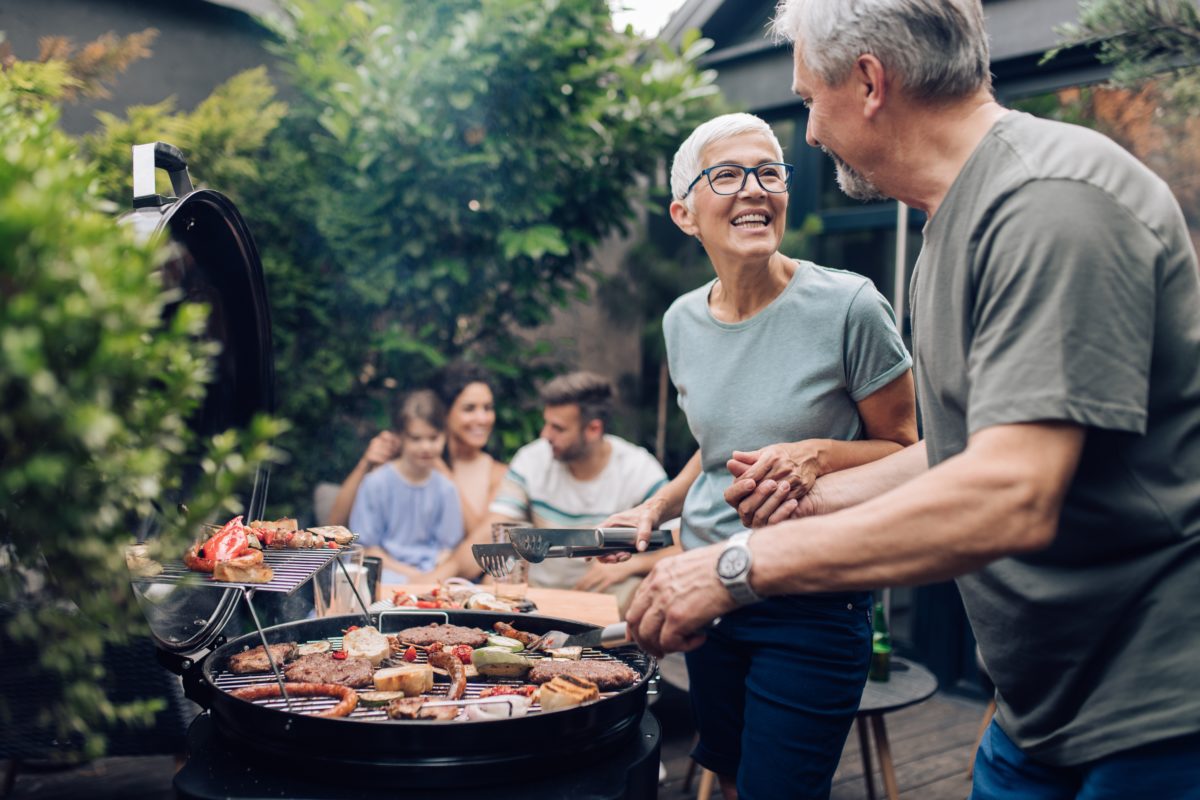Fun in the Sun: Summer Food Safety

Date: July 11, 2022
Categories: Health Focused
Catherine Hill, BS, CHES
Health Educator
Community Outreach & Prevention
Picnics and barbecues with friends and family can be fun for all during the warmer months. However, outdoor events are also a good opportunity for foodborne bacteria to grow. Whether you’re planning a small cookout or a big holiday celebration, a camping trip or a potluck dinner, make sure your plans include food safety.
Each year 1 in 6 people get sick from contaminated food. Don’t let this happen to you! Continue reading below for simple tips from the U.S. Food and Drug Administration for transporting, preparing, and serving your food safely.
Pack and Transport Food Safely
- Keep the food cold. Cold food should be stored at 40 degrees or below to prevent bacteria from growing.
- Organize cooler contents. Pack beverages in one cooler and perishable foods in another – this way, perishable foods won’t be exposed to warm temperatures as people open the beverage cooler.
- Limit the number of times the cooler is opened as much as you can.
- Don’t cross-contaminate. Be sure to keep raw meat, poultry, and seafood securely wrapped.
- Clean your produce. Rinse fresh fruits and vegetables before packing them in the cooler and dry them with a paper towel.
Quick Tips for Picnic Site Preparation
- Outdoor hand cleaning: No access to running water? No problem! Use a water jug, some soap, and paper towels.
- Utensils and serving dishes: Be sure to keep all utensils and platters clean when preparing food.
Follow Safe Grilling Tips
- Marinate safely. Marinate foods in the refrigerator — never on the kitchen counter or outdoors.
- Cook immediately after “partial cooking.” Partial cooking before grilling is only safe when the partially cooked food can go on the hot grill immediately, for example at a home with a grill on the patio or deck.
- Cook food thoroughly. When it’s time to cook the food, have your food thermometer ready. Always use it to be sure your food is cooked thoroughly.
- Keep “ready” food hot. Grilled food can be kept hot until served by moving it to the side of the grill rack, just away from the coals. This keeps it hot but prevents overcooking.
- Don’t reuse platters or utensils. Be sure to grab a clean plate/utensils for cooked food – do not use one that previously held raw meat, poultry, or seafood as it allows bacteria from the raw food’s juices to spread to the cooked food.
- Check for foreign objects in food. If you clean your grill using a bristle brush, check to make sure that no detached bristles have made their way into grilled food.
Serving Picnic Food – Keep cold foods cold and hot foods hot
Keeping food at proper temperatures is critical in preventing foodborne illness. You never want to let your picnic food remain in the “danger zone” – between 40 degrees and 140 degrees Fahrenheit – for more than 2 hours, or 1 hour if outdoor temperatures are above 90 degrees. Follow these simple rules for keeping cold foods cold and hot foods hot:
- Cold Food
- Cold perishable food should be kept in the cooler at 40 °F or below until serving time.
- It should not sit out for longer than 2 hours, or 1 hour if the outdoor temperature is above 90 °F. If it does — throw it away.
- Foods in individual serving dishes can be placed directly on ice, or in a shallow container set in a deep pan filled with ice. Drain off water as ice melts and replace ice frequently.
- Hot Food
- Hot food should be kept at or above 140 °F.
- Wrap it well and place it in an insulated container until serving.
- Just as with cold food — these foods should not sit out for more than 2 hours, or 1 hour in temperatures above 90 °F. If food is left out longer, throw it away to be on the safe side.
- Additional Safe Food Handling Tips: Four Simple Steps:
- Clean:
- Wash your hands before and after handling food.
- Wash cutting boards, dishes, and utensils.
- Clean off kitchen surfaces.
- Separate:
- Separate raw meats from other foods.
- Use separate cutting boards for fresh produce and raw meats.
- Don’t reuse marinades used on raw foods unless you bring them to a boil first.
- Cook:
- Cook to the right temperature.
- Use a food thermometer – foods must be cooked to a safe minimum internal temperature to destroy harmful bacteria.
- Cook eggs until the yolk and the white are firm.
- Bring sauces, soups, and gravy to a boil when reheating.
- Chill:
- Refrigerate perishable foods promptly, within 2 hours of cooking or purchasing.
- Never thaw food at room temperature, such as on the countertop.
- Always marinate food in the refrigerator.
- Clean:
Source: https://www.fda.gov/food/buy-store-serve-safe-food/handling-food-safely-while-eating-outdoors
